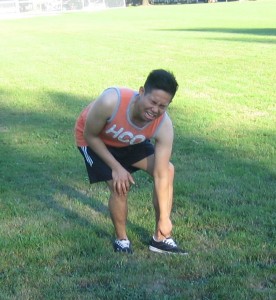Some people can end up with twisted an ankle, but if an ankle is swelling and causing pain, it can be a sprained ankle. It can be caused by stretching and a torn in the ligaments in the ankle. People with repeated and severe sprains can develop a long-term pain in the joint and weakness and treating a sprained ankle can help prevent ankle problems from progressing.
[youtube url=”https://www.youtube.com/watch?v=e5YKw-ymJy4″]The high ankle ligaments are found above the ankle which connects the tibia to the fibula. It is important to that the tibia and fibula are stable since walking and running places a great amount of force at this joint. A high ankle sprain happens when there is tearing and damage incurred to the high ankle ligaments.
Symptoms of high ankle sprain

A high ankle sprain is due to twisting or a rotational injury and also in the setting of an ankle fracture which causes the bones to break. Sometimes, the ligaments found inside the ankle which is also known as the deltoid becomes torn. The injury from the deltoid spread to the high ankle, ligaments or the syndesmosis and up to the leg through the fibula and this causes the fibula to break at a very high level. Take note that this type of fracture is called a Maisonneuve fracture. Those who have high ankle sprain that is not accompanied by a fracture can support weight but can experience pain on the joint amidst the tibia and fibula found at the level of the ankle.
Causes of high ankle sprain
High ankle sprain is caused by rotational injuries that are similar to ankle fractures and common during impact sports. An external rotation is when the foot is turned towards the outside that results to these tears.
Complications that can be caused by high ankle sprains include stiffness of the ankle. In case surgery is performed, it can cause infection or damage to one of the nerves that function in providing sensation to the top of the foot which is known as the superficial peroneal nerve. Arthritis can also develop from a severe sprain if the cartilage of the ankle is damaged.
Treatment and home remedies
- Rest the affected joint. Avoid adding weight on the affected area and use crutches or a cane but its best to avoid using the affected feet.
- Apply an ice pack on the affected area for 20 minutes. Repeat the procedure for the first 48 hours right after the injury. If you want to learn more about cold therapy, click here.
- Apply compression immediately after the injury together with an ice compress in order to reduce the swelling. Use an elastic bandage in driving the fluid away from the affected area. You should also wrap the toes going up the foot and around the ankle in order to move the fluid up the leg. Make sure that the bandage is not too tight since it might impede with proper circulation.
- Elevate the ankle 6-10 inches higher than the level of the heart to promote venous and lymphatic drainage. This will prevent accumulation in the joint that causes severe pain and delay the healing. This must be done with the application of ice and compression.
